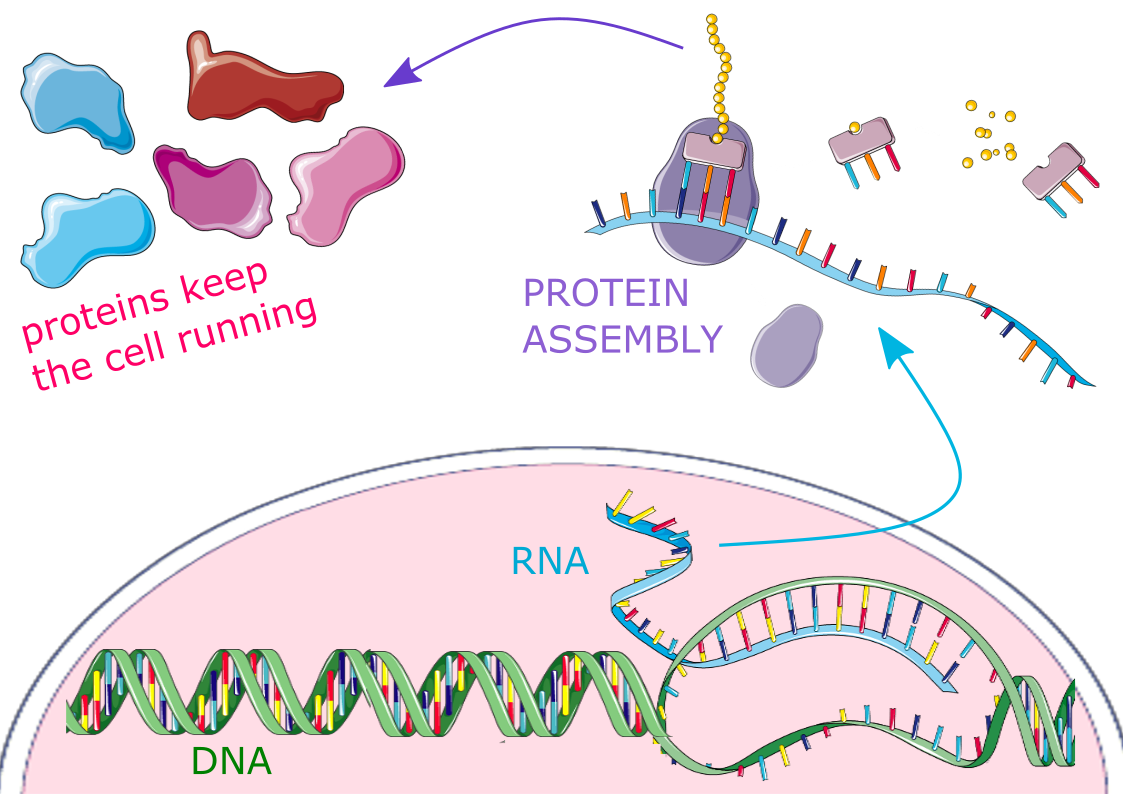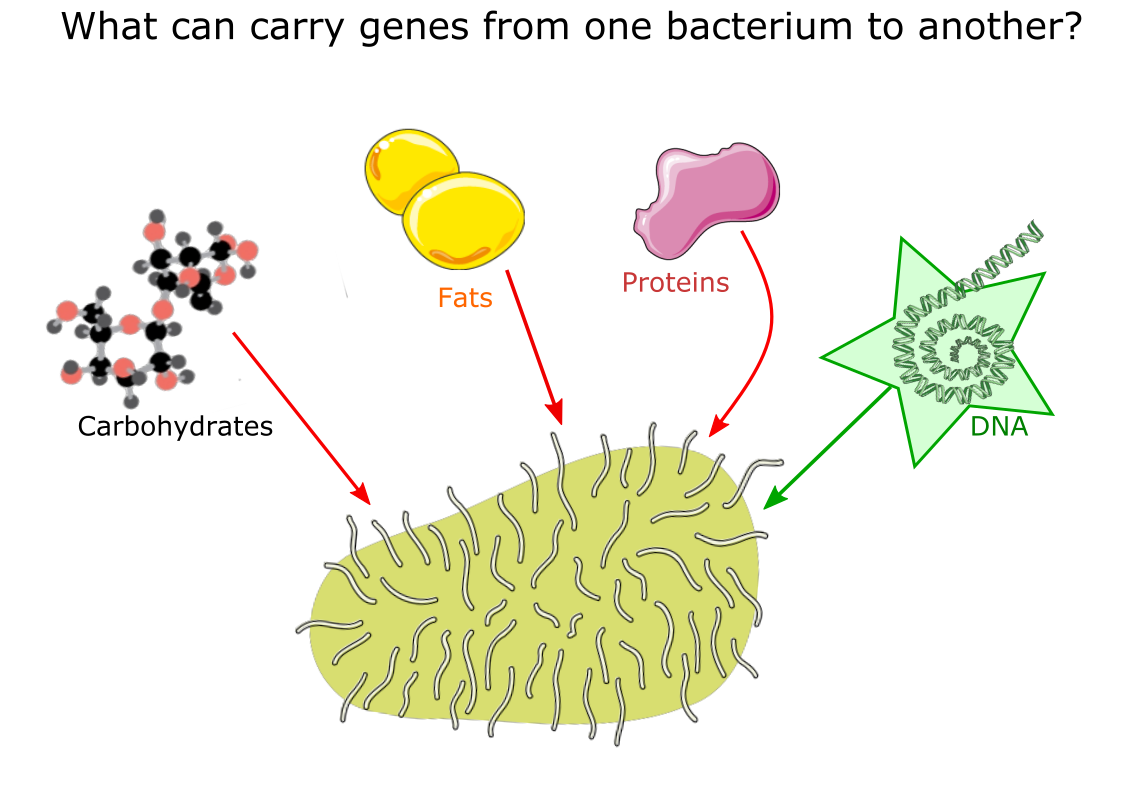This is something every high school biology student knows: Genes are the building blocks of life, and genes are encoded in DNA. Nowadays, this is an unquestionable fact, but actually, we didn’t know that DNA was so important for life until 1944 [1]. That’s less than a hundred years ago. That’s at the tail end of the Second World War – which means that every single person fighting in the First World War did not know what we now know, that genes are made of DNA.
How do we know this? On its face, DNA wasn’t an obvious candidate for the fundamental unit of life. That would have been proteins. Proteins are thought of as the “workhorses of the cell,” because almost nothing necessary for life gets done without proteins. Proteins are responsible for generating the cell’s energy, communicating with the cell’s environment, and directing the cell to grow and divide and make even more cells. We know now that genes encode proteins, and it is the genes encoded in DNA, passed on from parents to children, that are the building blocks of the cell. Unlike a protein, DNA is completely inert, sequestered inside the cell’s nucleus, unable to move or react with other molecules or perform any of the functions necessary to keep a cell energized and alive. Because of its apparent dormancy, DNA is easy to overlook. For a long time scientists were sure that genes, the information a cell needs to function and survive, must be passed on by proteins. We know now that’s not the case…but how do we know that?

How do we know genes are inherited at all?
Let’s start with how we even know that genes exist in the first place, that there is some unit of information that must be being passed from parent to offspring. In the 1860s, an Austrian monk named Gregor Mendel was growing pea plants as a hobby [2]. Peas have observable qualities, called traits by geneticists, just like people do. A person might have blond or black hair, or brown or blue eyes; a pea plant is yellow or green, tall or short, wrinkly-skinned or smooth. What Mendel the monk saw when he was breeding his pea plants was that some of these traits were always passed on. For example, breeding together two pea plants with smooth seeds only produced smooth-seeded peas, never wrinkled. This can be seen in people, too: Two blue-eyed people will only ever have a blue-eyed baby, never one with brown eyes. What’s more, some traits were dominant over others. When a smooth-seed pea was crossed to a wrinkle-seed pea, wrinkly peas were always produced, and the trait of wrinkly-ness is said to be genetically dominant. To go back the analogy of a person’s eye colour, if a brown-eyed person has a baby with a blue-eyed person, they will almost certainly have a baby with brown eyes. Brown eye colour is the dominant trait.
This experiment with the pea plants showed that traits were inherited, passed from parent to child (or pea plant to baby pea plant). The child’s cells must be getting some kind of instructions, telling it to build wrinkly peas or brown eyes. The gene must exist, then. But what is a gene made of?
How do we known genes are encoded in DNA?
The experiment that showed this came out of New York City in the 1940s, from microbiologists named Oswald Avery Colin MacLeod, and Maclyn McCarty [1]. Microbiologists study bacteria, and when it comes to genetics, bacteria possess a few tricks that humans and peas do not. Instead of only being able to transfer genes from parent to child, bacteria can pass genes between one another, like trading cards. Avery, MacLeod, and McCarty wanted to know what the cards were made of. They killed some bacteria by boiling them open, and separated what they found inside into groups of molecules, which included fats, carbohydrates, proteins, and DNA. Then they tested these molecules for their ability to carry genes from one bacterium to another. They gave these molecules, one by one, to living bacteria, and observed whether they inherited the traits of the dead bacteria. Only one molecule was found to carry those genes from bacterium to bacterium, and much to the surprise twentieth-century biologists, it wasn’t a protein. It was that inert, boring, nucleus-dwelling chemical: DNA.

Where in the cell do genes live?
Mendel, with his smooth and wrinkly peas, showed that traits were passed on. Dr. Thomas Hunt Morgan, a researcher working in New York in the early 1900s, was beginning to understand how this was happening [3]. Dr. Morgan worked with fruit flies, and just like people, fruit flies can have different eye colours. Fruit fly eyes might be white, red, orange, or yellow. Dr. Morgan noticed something odd with his flies: Red-eyed flies were always male. Female fruit flies never, ever had red eyes.
This might have simply been shrugged off as an odd occurrence, but Dr. Morgan knew something else: He knew about the Y-chromosome. He knew that “maleness” was linked to these chromosomes. If red eyes were linked to maleness, Dr. Morgan thought, then were red eyes linked to chromosomes? We can follow that logic to its end: Genes, like the one encoding red eyes, must be on chromosomes, and chromosomes and the genes they carry are made of DNA.
Traits, like hair colour, eye colour, and whether or not you have a dimpled chin, are passed from parent to offspring in genes. Genes live on chromosomes, protected by the nucleus, and they are made of DNA. How do we know this? Because scientists looked at peas, bacteria, and fruit flies, and thought hard about what they saw.
